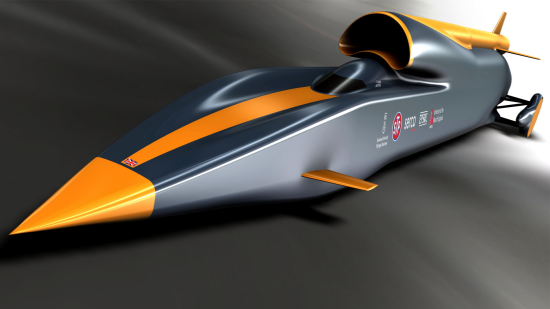Welcome to Section Six
 Now that you can drive smoothly and methodically, get into tight spaces, and talk about what you're doing as you go along, it's time to improve your reading skills.
Now that you can drive smoothly and methodically, get into tight spaces, and talk about what you're doing as you go along, it's time to improve your reading skills.
Accidents, by definition, occur when a vehicle collides with another vehicle or other object. It, therefore, follows that if the gaps between vehicles and their surrounding environment were greater, then the expectation of collision would be less.
It's often said that 'speed kills' but the phrase is never qualified - speed doesn't kill... Bloodhound, pictured here, is designed to reach 1000mph with the driver getting out alive. On the other hand, if you hit a toddler at 3mph you might kill him.
Any speed is fine - but you need enough space to stop safely. This section is about becoming more 'defensive' as you drive and creating sufficient space for your speed. You'll also be learning to get there quicker by driving slowly (you'll understand this when you master it!).
Space: Most people drive within space margins that are much too tight; because of this you have a week to concentrate on nothing new, except creating and maintaining space around your vehicle. A vital aspect of creating space is effective control of speed. The speed limit project will start to raise your awareness of the term 'Safe speed for the conditions'.
Think about each aspect of space set out in the notes and how you can start to create and maintain adequate safety margins.
Observation: How does observation affect your ability to create space in normal driving? Do you fully understand what 'thinking ahead' means and the effect it has on space and speed.
Speed: I could fill a page with reasons for speed limits and the dangers of breaking them. If you normally exceed speed limits, reading the page would be unlikely to stop you. Telling learners or more advanced pupils that they should not speed is usually a waste of time; you must help them to understand the reasons - and you must set a good example.
The speed limit project is designed to 'get you thinking'.
If you are an ADI student: When working as an instructor you will need ensure that your (sometimes sceptical) pupils understand the importance of speed limits. Before you can convince your pupils, you must convince yourself. You can only do this by observation and thought.
 Reading the road: The concept of reading the road is a natural extension of your study so far. In order to successfully create a safe space around your vehicle you will need to plan your driving. As you work through this section you will further develop your natural ability to plan ahead.
Reading the road: The concept of reading the road is a natural extension of your study so far. In order to successfully create a safe space around your vehicle you will need to plan your driving. As you work through this section you will further develop your natural ability to plan ahead.
The final commentary driving project will help you develop your commentary up to the standard required during advanced driving tests (note: a commentary is not required for all advanced driving tests).